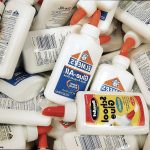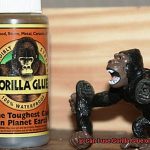Picture this: you’re minding your own business, sipping your morning coffee, when suddenly disaster strikes. A spill. And now you’re left with an unsightly stain mocking you from your beloved carpet. But fear not, my friend, because there’s a secret weapon out there that many carpet owners swear by: Goo Gone. Yep, the name says it all – it’s like magic in a bottle.
But before you go dousing your carpet in this miracle elixir, let’s take a moment to consider both the pros and cons of using Goo Gone on your precious floor covering.
Goo Gone is no ordinary stain remover. It’s like the superhero of adhesive removers, capable of vanquishing even the most stubborn stains known to mankind. Gum? Glue? Oil? No problemo. This bad boy can handle them all. But here’s the catch – like any superhero, it comes with its fair share of risks.
You see, while Goo Gone can work wonders when used correctly (emphasis on “correctly”), there are a few things you need to keep in mind to avoid turning your carpet into a sticky mess or worse yet, causing irreversible damage. So buckle up and get ready for some expert advice, tried-and-tested techniques, and essential tips that will make using Goo Gone on carpets a breeze.
But first things first – safety precautions. Don’t worry; we’ve got you covered. Before diving headfirst into battle against those pesky stains, do yourself a favor and perform a patch test on an inconspicuous area of your carpet. Trust me; you don’t want to end up with an even bigger eyesore than the original stain (yikes.). And always follow the manufacturer’s instructions for usage – they put them there for a reason, after all. Oh, and don’t forget to crack open a window or two; you wouldn’t want to inhale any funky fumes while you’re at it.
So, my fellow stain-fighters, sit tight and prepare to unlock the secrets of harnessing the power of Goo Gone without leaving a sticky situation in its wake. Together, we’ll conquer those stains and restore your carpet to its former glory. Let’s get down and dirty (but not too dirty – we’re here to clean, after all).
What is Goo Gone?
Contents
- 1 What is Goo Gone?
- 2 Spot Testing for Carpet Damage
- 2.1 Step 1: Choose a Small, Inconspicuous Area
- 2.2 Step 2: Vacuum the Area
- 2.3 Step 3: Apply Goo Gone with Caution
- 2.4 Step 4: Gentle Rubbing and Circular Motions
- 2.5 Step 5: Allow Time for Penetration
- 2.6 Step 6: Blotting Away the Goo Gone
- 2.7 Step 7: Inspect for Damage and Discoloration
- 2.8 Step 8: Test on a Larger Hidden Area
- 3 How to Use Goo Gone on Carpet
- 4 Rinsing the Carpet After Using Goo Gone
- 5 Considerations When Using Goo Gone on Different Types of Carpet Fibers
- 6 Professional Cleaners and Manufacturer Guidelines for Using Goo Gone on Carpet
- 7 Safety Precautions When Using Goo Gone on Carpet
- 8 Conclusion
This powerful cleaning product is a go-to solution for tackling even the toughest stains. In this article, we will explore what Goo Gone is, how it works, and specifically address its use on carpets.
What is Goo Gone?
Goo Gone is a popular cleaning product known for its effectiveness in removing sticky and gooey stains from a wide range of surfaces. Whether it’s adhesive residue, gum, crayon marks, grease, or tar, Goo Gone has got you covered. Available in liquid or gel form, Goo Gone breaks down the bonds between the sticky substance and the surface it has adhered to.
How does Goo Gone work?
The primary active ingredient in Goo Gone is petroleum distillates. These powerful solvents dissolve and loosen the sticky residue, making it easier to remove without causing damage. Additionally, Goo Gone contains citrus extracts that enhance its cleaning power and add a fresh scent.
Using Goo Gone on Carpets:
When using Goo Gone on carpets, caution is crucial. Perform a spot test on a small, inconspicuous area before applying it to the entire stain or affected area. Apply a small amount of Goo Gone and blot gently with a clean white cloth after a few minutes. Check for any discoloration or damage to the carpet fibers.
If the spot test produces no adverse effects, proceed with caution by following these steps:
- Blot up any excess residue or spill on the carpet using a clean cloth or paper towel.
- Apply a small amount of Goo Gone directly onto the affected area.
- Allow the product to penetrate the stain or adhesive for a few minutes without oversaturating the carpet padding.
- Gently blot the area with a clean white cloth, working from the outside towards the center of the stain to prevent spreading.
- Repeat the process until the stain or adhesive is completely removed.
Important Tips:
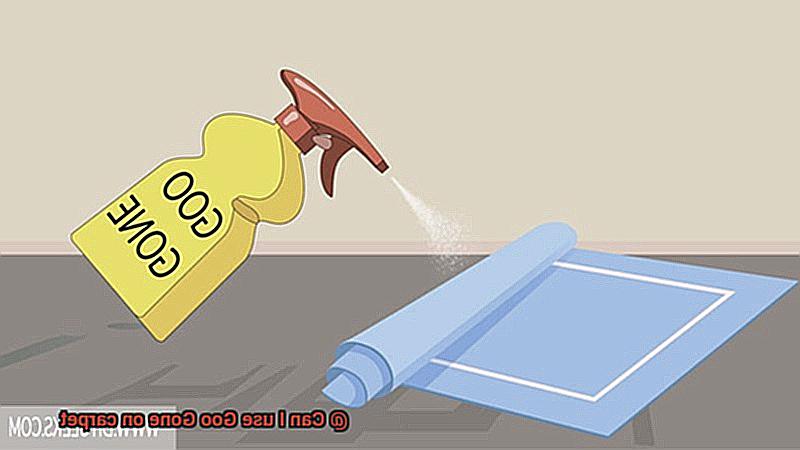
- Thoroughly rinse the treated area with clean water to remove any Goo Gone residue.
- Allow the carpet to air dry completely before walking on it or placing furniture back in the treated area.
- Goo Gone may not be suitable for delicate or natural carpet fibers like wool or silk. Consult with a professional or follow manufacturer guidelines if unsure.
- Always read and follow the instructions provided on the Goo Gone packaging for best results and safety precautions.
Spot Testing for Carpet Damage
Imagine finally finding a solution to those pesky carpet stains, only to end up with irreparable damage or unsightly discoloration. To avoid this nightmare scenario, it is crucial to perform a spot test before using any cleaning solution on your carpet, including the mighty Goo Gone. In this article, we will guide you through the simple steps of spot testing, ensuring that your carpet remains unharmed while you bid farewell to stubborn adhesive residues.
Step 1: Choose a Small, Inconspicuous Area
Selecting a small and inconspicuous area of the carpet, such as a corner or underneath furniture, is essential for spot testing. This allows you to evaluate the effects of Goo Gone without causing noticeable damage if it doesn’t work well.
Step 2: Vacuum the Area
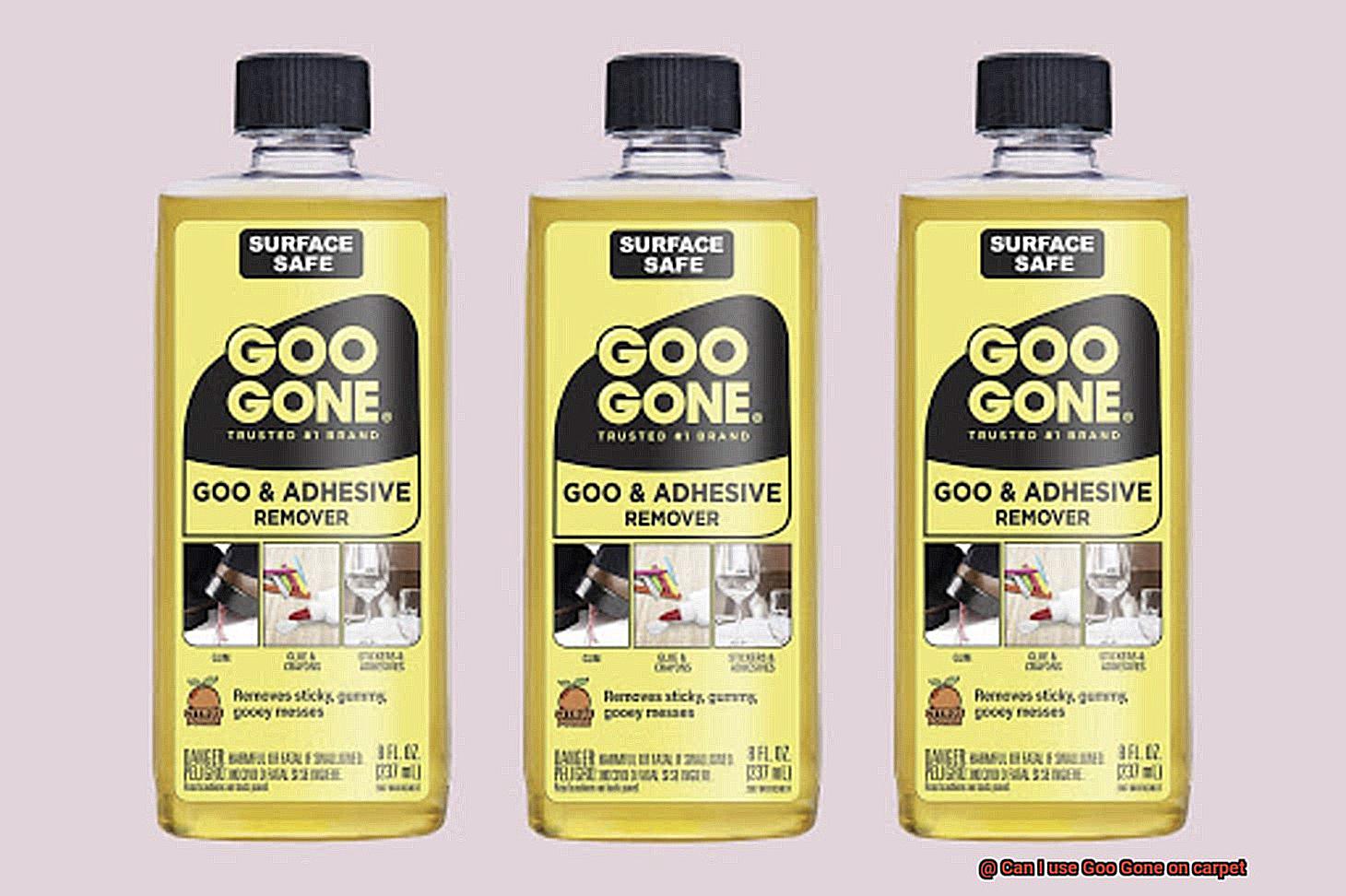
Before applying Goo Gone, make sure to vacuum the test area thoroughly. Removing loose dirt and debris ensures accurate results and prevents any interference during the spot testing process.
Step 3: Apply Goo Gone with Caution
Take a clean cloth or sponge and apply a small amount of Goo Gone. Avoid oversaturating the carpet with excessive liquid as this can lead to potential damage. Instead, lightly dab the product onto the chosen spot.
Step 4: Gentle Rubbing and Circular Motions
Gently rub the Goo Gone into the carpet fibers using circular motions. Remember not to scrub vigorously, as this can cause friction and potentially harm the carpet. The goal is to allow the product to penetrate and break down the glue or adhesive residue.
Step 5: Allow Time for Penetration
Follow the instructions on the product label and allow the Goo Gone to sit on the spot for a few minutes. This gives it enough time to effectively penetrate and dissolve the stubborn residue.
Step 6: Blotting Away the Goo Gone
After the recommended time has elapsed, use a clean cloth or paper towel to blot away the Goo Gone and any dissolved residue. Avoid rubbing or scrubbing, as this can spread the stain or residue further into the carpet.
Step 7: Inspect for Damage and Discoloration
Carefully inspect the spot for any signs of damage, discoloration, or changes in texture. Look for fading, color bleeding, or any other undesirable effects. If there is no visible damage or adverse reactions after spot testing, it indicates that Goo Gone is safe to use on your carpet.
Step 8: Test on a Larger Hidden Area
While spot testing is informative, it’s always advisable to test Goo Gone on a larger hidden area before treating larger stains or patches. This ensures compatibility with your carpet fibers and minimizes any potential risks.
How to Use Goo Gone on Carpet
Goo Gone is a powerful adhesive remover that can help you eliminate sticky messes from various surfaces. But what about using it on your cherished carpet? In this comprehensive guide, we will walk you through the steps to safely and effectively use Goo Gone on carpet, ensuring you bid farewell to those stubborn stains. Let’s dive in.
Spot Test
Before employing Goo Gone, conduct a spot test on an inconspicuous area of the carpet. Apply a small amount of Goo Gone and gently blot it with a clean white cloth. Check for any color transfer or damage to the carpet fibers. If everything looks good, proceed confidently.
Preparing the Area
Prior to applying Goo Gone, remove any loose debris or dirt from the affected area. Utilize a vacuum cleaner or a soft brush to gently cleanse the carpet surface. This step ensures that Goo Gone can work its magic without any hindrance.
Applying Goo Gone
Carefully apply a modest amount of Goo Gone directly onto the stained area of the carpet. Be cautious not to oversaturate the fibers; just enough to cover the stain should suffice.
Letting it Sit
Allow Goo Gone to penetrate and work on the stain for a few minutes. The exact duration will depend on the severity of the stain, but generally, 3-5 minutes should be sufficient.
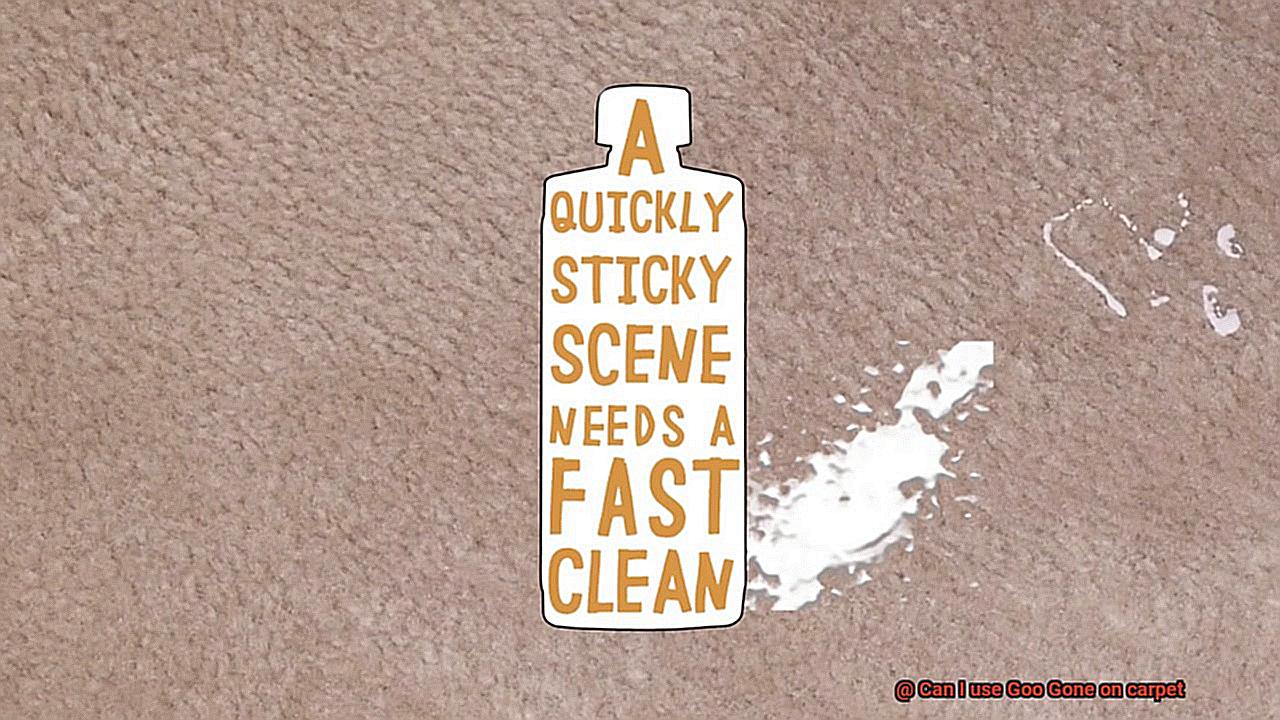
Blotting the Stain
Grab a clean white cloth or paper towel and gently blot the stained area. Avoid vigorous rubbing or scrubbing, as this can push the stain deeper into the carpet fibers. Instead, employ gentle blotting motions until you witness the stain transferring onto the cloth.
Rinsing with Water
After blotting, dampen a fresh cloth with water and gently dab the treated area to remove any residual Goo Gone and remaining stain particles. Remember not to oversaturate the carpet, as excessive moisture can lead to other issues.
Drying and Assessing
Allow the carpet to air dry completely. Once dry, inspect the treated area to ensure that the stain has been fully eradicated. If any residue persists, repeat the process or consider using a carpet cleaner specifically designed for tough stains.
Important Tips:
- Goo Gone should not be used on delicate or sensitive carpet materials such as wool or silk. If you have these types of carpets, it’s best to consult a professional carpet cleaner for safe and effective adhesive removal.
- Always read and follow the instructions provided by the manufacturer of Goo Gone for best results and safety precautions.
Rinsing the Carpet After Using Goo Gone
Now, it’s time to finish the job by rinsing the area and ensuring your carpet looks fresh and clean. Let’s dive into the step-by-step process to effectively rinse your carpet after using Goo Gone:
- Blotting the Area: To start, grab a clean cloth or sponge and dip it into warm water. Carefully blot the area where you applied Goo Gone, removing any excess product and loosening any remaining residue. Remember to avoid rubbing vigorously, as this can spread the adhesive or damage the delicate carpet fibers.
- Using a Carpet Cleaner or Mild Detergent: For a thorough clean, mix a carpet cleaner or mild detergent with water according to the instructions provided. Apply the cleaning solution to the stained area and gently scrub it using a soft-bristled brush or sponge. Work in circular motions, ensuring you don’t apply excessive pressure that may harm the carpet.
- Thoroughly Rinsing: After scrubbing, it’s time to rinse away all traces of the cleaning solution. Use clean water and a damp cloth or sponge to thoroughly rinse the area. It’s crucial to remove any cleaning solution or residue completely from the carpet, as leftover residue can attract dirt and lead to discoloration over time.
- Blotting Again: Once you’ve finished rinsing, take a clean, dry cloth and blot the area once more to eliminate any excess moisture. This step helps speed up the drying process and prevents potential damage caused by prolonged exposure to moisture.
- Air Drying: Allow your carpet to air dry completely before walking on it or placing furniture back onto it. This ensures that no moisture is trapped within the carpet fibers, which could lead to mold or mildew growth.
- Additional Steps (if necessary): If you still notice traces of adhesive residue after rinsing, don’t panic. You can repeat the process or try using a specialized carpet stain remover that is safe for your specific type of carpet. Remember to test any cleaning solution or stain remover on a small, inconspicuous area of the carpet first to avoid potential damage or discoloration.
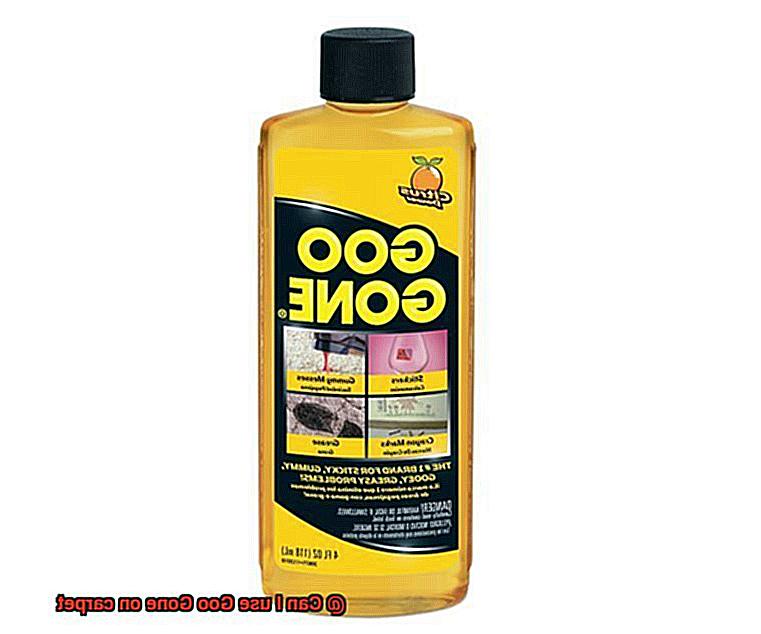

Considerations When Using Goo Gone on Different Types of Carpet Fibers
Well, fear not. Goo Gone could be your saving grace. However, before you jump in and use it on your carpet, there are a few crucial considerations to keep in mind. Different types of carpet fibers can react differently to Goo Gone, so let’s dive into the details and discover what you need to know.
Synthetic Fibers – Strong and Durable:
Synthetic fibers like nylon or polyester are tough and can handle Goo Gone with ease. These carpets can withstand the powerful cleaning properties of Goo Gone without much worry. Nevertheless, it is essential to conduct a small patch test to ensure there is no discoloration or damage.
Natural Fibers – Handle with Care:
On the flip side, if your carpet is made of natural fibers such as wool or cotton, caution is required. These delicate fibers can be sensitive to strong chemicals, making it vital to consult the manufacturer or a professional carpet cleaner before using Goo Gone on these carpets.
Stain Resistance – A Protective Shield:
Many modern carpets come with built-in stain resistance treatments. If your carpet boasts this feature, using Goo Gone is generally safe. However, it is always wise to test a small area first to ensure compatibility and avoid any potential damage.
Adhesive Residue – Gentle Removal:
Goo Gone excels at removing sticky residue like glue or tape marks. When dealing with adhesive stains on carpets, a gentle touch is essential. Begin by carefully scraping off any excess residue using a plastic scraper or dull knife. Then, apply a small amount of Goo Gone onto a clean cloth and dab the stain gently, avoiding vigorous rubbing. Rinse the area thoroughly afterward.
Spot Testing – Better Safe than Sorry:
Regardless of the carpet fiber, it is crucial to conduct a spot test before using Goo Gone on a larger area. Apply a small amount of Goo Gone to an inconspicuous spot, wait a few minutes, and inspect for any discoloration or damage. If everything looks good, you can confidently proceed to tackle the stain.
Professional Cleaners and Manufacturer Guidelines for Using Goo Gone on Carpet
If you find yourself in a sticky situation with your carpet, you may be tempted to reach for that trusty bottle of Goo Gone. But before you proceed, it’s crucial to understand the guidelines set by professional cleaners and manufacturers. While Goo Gone is renowned for its ability to remove sticky residues, adhesives, and gum from hard surfaces like glass and metal, using it on carpet can be a risky endeavor.
Here’s why professional cleaners and manufacturers generally advise against using Goo Gone on carpet:
- Potential damage: Carpet is a delicate material that can easily fall victim to the harsh chemicals and solvents found in products like Goo Gone. The ingredients in Goo Gone, including petroleum distillates and citrus oils, have the power to dissolve or discolor carpet fibers, leaving behind unsightly stains or patches.
- Dirt magnet: The residue left behind by Goo Gone may have an unintended consequence – attracting dirt and grime. This means that your carpet could end up looking even dirtier than before.
- Carpet-specific reactions: Different types of carpets may react differently to Goo Gone, so it’s important to consult the manufacturer or a professional cleaner before attempting to use it.
So, what can you do if you find yourself faced with a sticky residue or adhesive on your carpet? Consider the following recommendations:
- Seek professional help: Professional cleaners possess the knowledge and expertise to handle various types of stains and substances on carpets. They have access to specialized products and equipment that are specifically designed for safe use on carpets.
- Manufacturer guidelines: Carpet manufacturers often provide detailed guidelines and recommendations for cleaning and maintenance. Adhering to these guidelines will help ensure that your carpet remains in prime condition.
- Test, test, test: If you’re determined to give Goo Gone a try on your carpet, it’s crucial to conduct a small-scale test first. Apply a small amount of Goo Gone to an inconspicuous area of the carpet and observe any potential adverse reactions or damage.
Safety Precautions When Using Goo Gone on Carpet
We’ve all been there – a sticky mess on our carpets that just won’t budge. Thankfully, Goo Gone is here to save the day. But before you dive headfirst into using this powerful adhesive remover, it’s crucial to take some safety precautions to protect your carpet and yourself. In this article, we’ll explore the necessary steps you should follow when using Goo Gone on your beloved carpet.
Step 1: Test, test, test.
Before applying Goo Gone to your entire carpet, it’s essential to perform a patch test in an inconspicuous area. Apply a small amount of Goo Gone and let it sit for a few minutes. Check for any discoloration or damage to the carpet fibers. If everything looks good, proceed cautiously.
Step 2: Gear up for safety.
Protect your hands by wearing gloves while working with Goo Gone. This will prevent skin irritation and potential chemical reactions. Additionally, make sure you’re working in a well-ventilated area to minimize exposure to fumes.
Step 3: Prep your carpet.
Before applying Goo Gone, remove any loose debris or dirt from the stained area. Use a vacuum cleaner or gently brush the carpet to ensure the adhesive remover can penetrate effectively.
Step 4: Apply with care.
Using a clean cloth or sponge, gently dab the affected area with Goo Gone. Avoid rubbing or scrubbing vigorously, as this can damage the delicate carpet fibers or spread the stain further.
Step 5: Give it time.
Allow Goo Gone sufficient time to penetrate and break down the adhesive. The duration may vary depending on the type and severity of the stain. Follow the product instructions for guidance.
Step 6: Blot away.
Once the adhesive has loosened, use a clean cloth or sponge to blot and lift away the stain. You may need to repeat this process several times until the stain is completely removed.
Step 7: Rinse and dry.
After successfully removing the adhesive, rinse the treated area thoroughly with clean water. This step will remove any residue left behind by Goo Gone. Finally, ensure the carpet is thoroughly dried to prevent moisture-related issues like mold or mildew growth.
5k9Vu_s7Ro8″ >
Conclusion
Yes, you can use Goo Gone on carpet.
It is a powerful and effective solution for removing sticky residue from various surfaces, including carpets. However, it is important to follow the instructions carefully and test it in an inconspicuous area first to ensure that it does not cause any damage or discoloration.
With its potent formula, Goo Gone can tackle tough stains and sticky messes on your carpet, leaving it clean and fresh.



